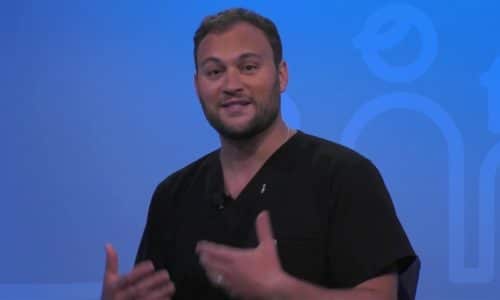Diagnosing Lumbar Stenosis |
Dr. Georgiy Brusovanik, Spine Surgeon with Baptist Health South Florida, says to diagnose spinal stenosis the use a MRI to confirm it.
He also explains the typical spinal stenosis patients will say they have no pain when sitting or laying down, but cannot walk, because of the pain in the legs.
Transcript
There are some activities that are I say pretty good where you might want to consider swimming is always up there I agree but think about swimming like freestyle for example in someone who has severe stenosis they may have a hard time swimming for a while because in extension which is what you would do in freestyle their neurological symptoms may worsen so I would say listen to your body if swimming works then do it you won’t cause any injury if you’re not having pain all right what other exercises do you like in terms of just helping so the walking I think is something that’s very good low-impact but for young people like you walking is working is not really enough you know you should be sweating after exercise okay you should be tired and I’m not talking much it from the Florida heat I say muscle confusion keep it interesting change your routine around if it’s the same thing over and over again besides being boring it’s really just going to exercise the same group of muscle right and cause the same issues with certain joints so changing the routine around I think would be my best advice right because once you start doing a routine every day like walking you’re good your body just becomes used to it and hence you need to use other muscles to kind of wake up other areas correct Arden all right doctor how do you diagnose a spinal stenosis and lumbar pain what do you do to determine it so you have sure when someone walks in you know you’ve seen enough of this but how do you determine it you know usually it’s the MRI that confirms it but the typical Lamba spinal stenosis patient will say I have no pain when I’m sitting I have no problem laying down and then when I get up and I go for a walk just after a short distance I can’t walk that’s the most common story pain-free wall sitting and just in pain tremendous pain especially lower extremity pain when they walk now the neurological exam on these patients will usually be normal and the exam in general is usually normal yet it’s specifically during activity that they’re suffering which is why the MRI is so critical to see exactly where there is narrowing in the canal








